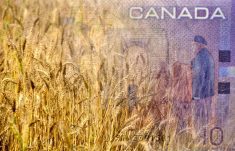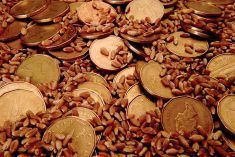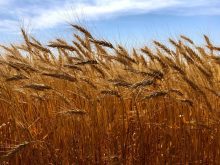CNS Canada –– North African countries have been some of the best customers for Canadian durum over the past few months, and weather issues with this year’s crops in the region should keep that demand solid going forward.
As of February, Morocco, Tunisia and Algeria combined have imported 1.3 million tonnes of Canadian durum during the 2015-16 crop year, according to Canadian Grain Commission data. That compares with 895,100 tonnes during the same period the previous year, and represents about half of Canada’s total durum export program to date.
Read Also

U.S. grains: Soybeans hit six-week low as Brazilian harvest looms; corn, wheat sag
Chicago | Reuters – Chicago soybean futures fell to six-week lows on Friday as worries about slowing export demand for…
(By comparison, demand out of Italy is down on the year, with 773,600 tonnes exported there to date, from 1.016 million at the same time last year.)
While it is dry in North Africa, and production will be below average, it won’t be aggressively so, said G3 Canada market analyst Neil Townsend.
That dryness has the potential to translate into increased demand for Canadian durum, but Townsend noted that there are many other macro factors at play — pointing to political issues, falling oil prices and unfavourable foreign exchange rates.
“There might be a bit more demand from those countries, but not an aggressive demand,” said Townsend.
Some durum demand could shift to soft wheat instead, he said. In addition, Canada is not the only supplier, with Mexico and Europe also potential sources if North Africa needs more durum.
From a pricing standpoint, attention now turns to crop prospects in North America and Europe, with any quality or quantity concerns out of Canada likely providing support. While world wheat supplies are abundant, Townsend noted, available durum supplies are much tighter.
G3 is forecasting a slight 1.2 per cent decline in Canadian durum acres this year, said Townsend. However, “that’s the margin of error, so it could be up.”
In those areas where farmers grow both hard red spring wheat and durum, the pricing favours durum, said Townsend. There is also a strong challenge from lentils and peas, which he expected would cut into durum acres.
The traditional durum areas of southern Saskatchewan are on the dry side, and will be watched closely. However, it’s still early and “a few good soaks would change the situation,” said Townsend.
— Phil Franz-Warkentin writes for Commodity News Service Canada, a Winnipeg company specializing in grain and commodity market reporting.
















